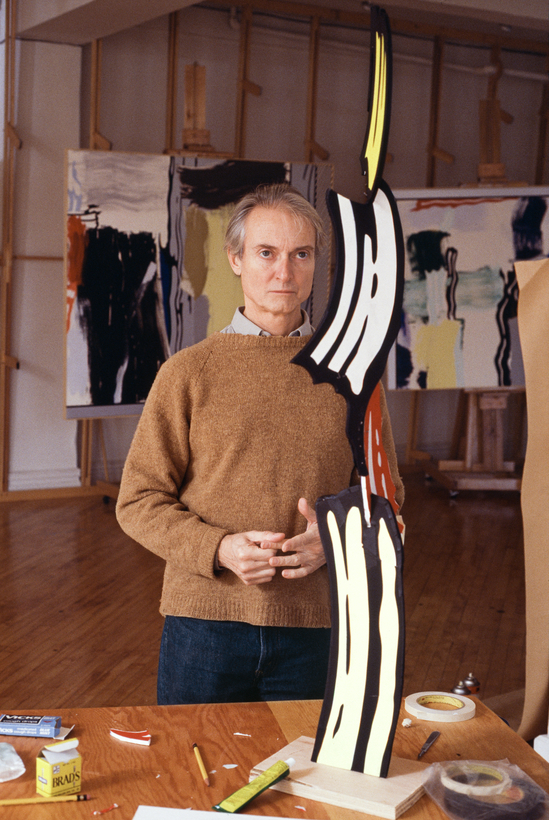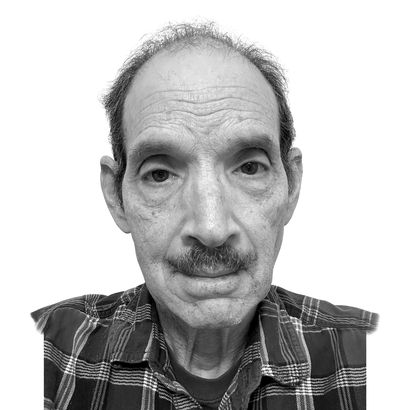The twin sculptures that make up Tokyo Brushstroke I & II show off a Roy Lichtenstein quite different from the one we know—the artist who famously hijacked the comic-strip style in canvases that projected witty, irony-drenched messages. Tokyo Brushstrokes, towering as much as 33 feet above a field outside the Parrish Art Museum, in the Hamptons, is alive with kinetic energy, a celebration of what sculpture can do. At the top of one of the two sculptures, a paint-like sweep, blue and white and frozen in aluminum, almost merges with a sunny Long Island sky. A palette-like shape tops the other. As Tokyo Brushstrokes awaits a restoration, it symbolizes something else: the growing need to repair outdoor sculptures made since their renaissance in the 1960s—at a frequency and expense many artists and owners may not have anticipated.
The Parrish is planning its restoration during the season of Lichtenstein’s 100th birthday (celebrated five weeks ago, on October 27), which the Parrish itself and other museums and galleries have already fêted with exhibitions. The Albertina, in Vienna, opens its centennial show on March 8; the Whitney will wait until 2026 for a massive retrospective.

The monumental sculptures came in the later decades of the artist’s long career. As Dorothy Lichtenstein, Roy’s widow, recalls, the genesis of this work was a set of 1960s canvases whose focus was brushstrokes—inspired, unsurprisingly, by a frame in a comic strip. The pictures both satirized the action-painting, brushstroke-centric style of Abstract Expressionists such as Jackson Pollock and playfully paid homage to them. But art-world in-jokes aren’t all these sculptures are up to. Parrish curatorial chief Corinne Erni particularly likes what Lichtenstein himself said about the series: “It’s a symbol of something it isn’t and that is part of the irony I’m interested in.” A brushstroke barely weighs anything; together, the sculptures at the Parrish weigh about 17,000 pounds.
They get their name from the first set of sculptures made from Lichtenstein’s designs and installed in the mid-1990s next to a Tokyo office building. Soon after, the Rhode Island company of Paul Amaral, a former boatbuilder, fabricated the Parrish sculptures, beginning a relationship with Lichtenstein works that outlasted the artist himself, who died in 1997. For the planned repairs, Amaral sent up a drone to check out the state of the sculptures. Rainwater was collecting in one section, so his team will discreetly insert a drain to solve that problem, but luckily the rest of the sculptures looked in pretty good shape. Amaral must erect a scaffolding to do the repainting—which, restorers say, must be done every 10 to 15 years, depending on the climate. It’s like keeping an old car, regularly parked outdoors, looking brand new. To ensure the repairs are environmentally safe, restorers must also satisfy myriad rules, different in every state. Decades ago, of course, the rules were far looser.
Lichtenstein was very much aware of the need for durability, his widow says. But in the late 20th century, not everyone was. Supporters of public art were often more focused on enriching their communities with new works. “I don’t think they thought about conservation maintenance at the time those sculptures went up,” says Martha Singer, a modern-and-contemporary-sculpture conservator based in the New York area. Safety-mandated changes have made paint less durable, Amaral says, and pollution and over-enthusiastic hands-on visitors can pose unforeseen challenges. Even global warming plays a role. “Things that aren’t supposed to be underwater,” Singer adds, “end up underwater.” One can imagine Lichtenstein shrugging all the problems off. As Dorothy Lichtenstein says, “That he was able to earn a living painting remained a thrill. I think he never really got over it even as he got older.”
Tokyo Brushstroke I & II is on view at the Parrish Art Museum, in Water Mill, New York
Check out AIR MAIL’s Arts Intel Report, our newly revamped research tool for what to do, see, and watch around the world
Peter Saenger has written and edited for The Wall Street Journal on such topics as art, art books, museums, and travel. His fiction has appeared in The New Yorker


